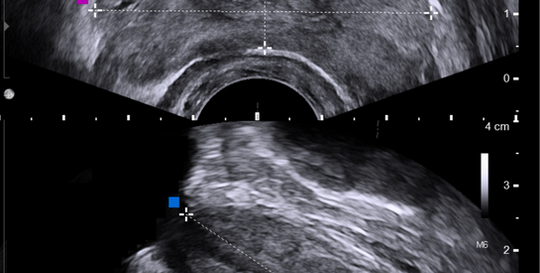DIAGNOSIS
1. Diagnosis of prostate diseases
At the prostate clinic, our main objective is the accurate diagnosis of diseases that affect this organ, using the latest protocols recommended in European and United States centers; Once the diagnosis is made, we can discuss the treatment alternatives that best meet the control of the disease and the expectations of each patient.
Diagnostic methods are individualized based on the clinical history, and include:
2. Lower urinary tract procedures
Depending on the results obtained with the previously described studies, the need to complement the diagnostic protocol with one or more of the following complementary studies is defined.

Cystoscopy
This study consists of internal visualization of the urinary tract, using endoscopic equipment called a cystoscope, which allows us to observe every detail of the bladder, urinary duct (urethra) and prostate. Allowing support, if a resolution procedure is needed, to make a better decision about the different existing methods.

Flowmetry
Functional study, which complements the diagnosis of benign prostatic growth, allowing the measurement of urinary flow. With this information, the degree of urinary restriction can be defined, as well as deciding the ideal type of treatment. Once treatment has been received, flowmetry allows the resulting improvement to be assessed.

Urodynamics
When the lower urinary tract does not present any obstruction, it is necessary to know the behavior of the bladder, in order to define a treatment aimed at controlling this organ, and ensuring that filling and emptying (urination) are as normal as possible. Urodynamics helps us measure pressures inside the bladder at different fillings and conditions.




